Window Blinds & Shades
BlindsMost of the window blinds are manufactured with slats of fabric, plastic, wood or metal which adjust by rotation from an open position to a closed position by facilitating overlapping of slats. There are no slats in a roller blind but it constitutes a single piece of material. Metal window blinds are a perfect choice to be used outside the house or business for protection against theft, vision, temperature, bad weather and fire (in fire-prone areas). Most of these blinds are machine operated instead of hand operation. The horizontal version adopts a thin woven "ladder" system for suspending the slats. This helps to close the slats through rotating drum which is attached and wrapped with each upper end of the woven ladder. The blind is pulled up with the help of a lift cord which stack tightly on window top as desired. Usually wider slats are used in vertical version which can pull a cord to stack the slats together either to one side or to divide in the center and stack on each end. The slats are rotated by rotating shaft in the upper head rail housing that runs by independent geared carriers which converts twisting of tilt rail to a rotation of each slat in synch. Fredrick Bopp and Edward Bopp who held the original patent invented the original vertical blinds in Kansas City, Missouri. The company and the patent were sold in the 1960s.Window blinds can be easily drawn with the help of a chord or through motorized automation. The motorized blinds can be controlled from a wall switch or keypad, a personal computer or remote control. This removes the need for the chords and enables to control inaccessible windows. Most of the homes feature blind control with central CBUS solutions. Besides being easy to use, this control is very effective to monitor the operation of blind to minimize heat effects during summer and reduce heat loss during cold weather. Varieties of blindsSlat blinds are the most common window blinds which contains various horizontal slats made of vinyl or metal. These slats are connected in such a way that it is easy to rotate them to enable light to pass between the slats. These slats can hide the light by rotating them up to about 170 degrees or you can pull them up to clear the whole window. Vertical blinds contain slats of plastic, stiffened fabric or metal which are hanged by one end from a track. These slats can be rotated up to 90 degrees so that light passes through them or for folding up one side of a window or door. Because of the ability of the slats to close tightly, vertical blinds are very effective in controlling the amount of exterior light or natural light to enter in the house. |
ShadesWindow Shades are coverings for a window that is attached to the outside or inside used mainly for privacy and to protection from sunlight, heat or cold. Although in the same family of window coverings, the shades tend to be somewhat see-through and blinds are generally made of a material that can not be seen through. There are four main types of window shades that are on the market today. The most popular is the cellular or honeycomb shade. Second, are pleated shades, then roller shades and lastly, roman shades. Cellular (Honeycomb) are the most popular shades on the market today. Most are made of polyester. If you look at the shade from the side, it looks like a bees hive. That is why it is also know as a honeycomb blind. Hunter Douglas invented this blind in the 1980's and has become huge mainly because of its energy efficiency. There are several pleat sizes to choose from and tons of different options including top down, bottom up, cordless, motorized and vertiglides which go back and forth. These are nice discount window coverings.Pleated shades are very similar to the honeycomb blinds except there is not cell or honeycomb. These were very popular before the honeycomb craze. Typically the fabric is richer and more unique with many, many different textures and colors. Most of the pleated blinds are made with fabric that allows light to come in. You have the same options as with the cellular's such as motorization and top down, bottom up. If you want to protect the fabric on pleated blinds from the sun, most will add a backing that is either light filtering or room darkening to the back of the blind. Roller shades are a solid piece of fabric that goes up and down on a roller. It can be spring loaded or used with the very popular cord loop system. This blinds are typically made with light filtering fabric or room darkening fabric. A new see through fabric called a sunscreen is becoming very popular. You can see those in restaurants and banks across the nation. With new weaves and colors, the sunscreen rollers is becoming more popular in houses. A cassette valance is a nice decorative and integrated headrail where the blind will roll up into. It finishes out the discount shades. Roman shades are the last on our list of popular blinds. They are the oldest of this category. Made to go up and down in a hobbled or flat stack. They are typically made of fabric for the more traditional roman but now the woven and bamboo's are becoming more and more popular. Some of today's romans can be motorized or come in the popular top down bottom up options. You can also put a backing on most that will protect the fabric of the blind or darken the room. |
Elegant Faux Wood Blinds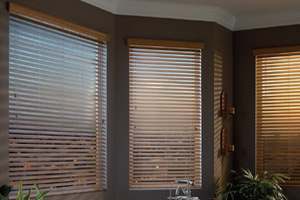 |
Honeycomb Shades and Honeycomb Blinds |
Plantation Shutters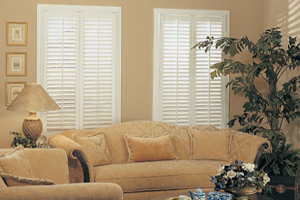 |
Traditional Pleated Shades |
Decorative Vertical Blinds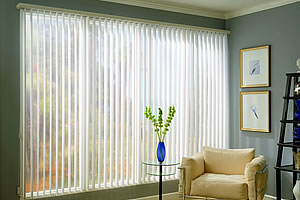 |
Blackout Roller Shades |
Traditional Wood Blinds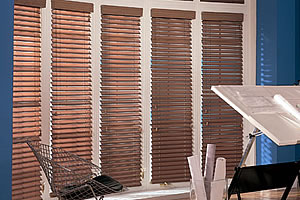 |
Solar Shades and Window Sunscreen Shades |
Standard Woven Wood Blinds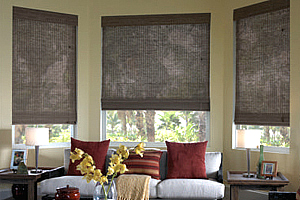 |
Light Filtering Roller Shades |





 Property
Property  Interior
Interior  Residential
Residential  Commercial
Commercial 


